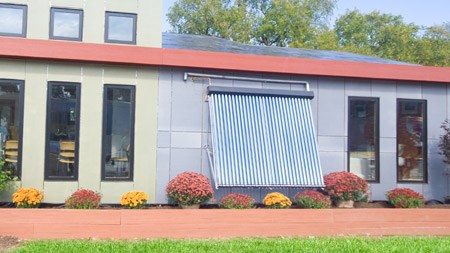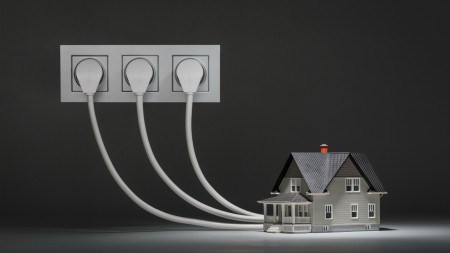While the ‘green revolution’ in residential property, unlike in the commercial sector, is admittedly still in its infancy, rapid strides in technology and increasing awareness of the potential cost savings and reduced environmental impact are making good sense to more and more home owners – and home buyers, says Pam Golding Properties.
Unquestionably, there is a swelling tide of interest among consumers in energy conservation which has recently been fuelled to a large extent by the frequency and inconvenience of load shedding combined with significantly increasing electricity costs. This is coupled with growing concerns around one of our planet’s most precious natural resources – water,” says Dr Andrew Golding, chief executive of the Pam Golding Property group.
“As the affordability of energy saving features improves, in coming years we are bound to see the desirability of homes which incorporate such features increase exponentially as being ‘green’ receives a higher ranking on the scale of considerations among home buyers.
“While it’s not possible to quote actual numbers, there is no doubt that residential properties offering green or energy and water saving features as well as emergency or back-up power solutions are at a competitive advantage in the marketplace and are becoming sought after by buyers in preference to properties that don’t offer such features. In a trend which began making its presence felt some 12 to 18 months ago, we are seeing ‘green’ features and energy efficiency definitely adding to the saleability of a property.”
Dr Golding says newer and brand new buildings, particularly in new residential developments such as Val de Vie Estate in the Western Cape Winelands, Baronetcy Estate in Plattekloof in Cape Town’s Northern Suburbs and Steyn City in Fourways, Gauteng, are frequently being equipped with a host of features incorporated into their design. These range from solar heating, water saving and recycling, water-wise gardens with indigenous plants, LED lighting with time switches and sensory capabilities and insulation to conserve heat or for cooling, to back-up power solutions such as invertors or generators, among others.
At Baronetcy Estate, going green is prioritised not only from an energy and cost saving perspective but also in adding to the resale value and long-term investment return. One home is already off the grid with others being built, while the estate’s security cameras and electric fencing are managed on a solar, off-grid system which is of particular relevance during any load-shedding.
But how achievable is it for the average home owner to ‘go green’? Says Anthony Stroebel, group marketing director for Pam Golding Properties and a newly-appointed director of the Green Building Council of South Africa: “This need not be prohibitive and is one of the reasons why we have partnered with the Green Building Council of South Africa, to drive a better understanding of value in the residential property market with regard to a home’s green credentials.
Fundamentally, this has a positive impact on the running costs of any home, while at the same time serving to preserve the world’s scarce resources as well as reducing the impact on the environment. Our vision is to reach a point in the hopefully not-too-distant future, where this becomes integral to a home’s specifications when selling and that buyers understand the value of this versus ‘less green’ homes.”
“We have always believed that leadership and responsibility go hand in hand. Responsibility aside, it is a great privilege to partner with the GBCSA in their capacity as the ‘green’ custodians of the built environment in this effort to create consciousness regarding the sustainability of our planet right where it surely begins – at home.
“Our aim is to meaningfully influence the ‘green’ agenda in the domestic space not only because it will increasingly impact how our clients perceive value in property, but because our economic and social development depends on it. We commend the GBCSA for their innovative My Green Home project run earlier in the year, whereby they spent six months working with the Ngewana family in Pinelands, Cape Town to green their home and show what is possible. In this relatively short period, this family achieved a 53 percent saving in electricity, a 44 percent reduction in water consumption and an 81 percent reduction in waste sent to landfill. We are proud to have been one of the main partners of this project and, as a result, have made available the My Green Home ‘Guide to Saving Money by Going Green’ available to our clients.”
Brian Wilkinson, CEO of the GBCSA says going green increasingly makes economic and environmental sense, as clearly demonstrated in the commercial property sector. “A huge part of the success of our journey in green building and environmental sustainability in the commercial property sector has been a close partnership with industry leaders such as Nedbank and Growthpoint, especially in terms of their credentials in this arena.
“It is important for us as a relevant movement to increase awareness and penetration so entering into the residential ‘green’ home sector was a natural progression for us, and Pam Golding Properties is an ideal fit. “Green building is a responsible choice for the built environment and can make an immediate difference. Our move into green homes was accelerated by the fact that the International Finance Group of the World Bank had already developed a green rating system for residential property.
“Our My Green Home project makes the point that while greening an existing home is not an overnight experience, there are meaningful savings which can be achieved immediately. In just one month, the Ngewana family was able to cut their electricity consumption by 32 percent, simply by changing their behaviour. The book explains numerous easy and practical ways to save energy at no cost, at low cost or by investing to save.
“It’s not difficult to see how these savings will translate into real benefits for consumers and home owners, particularly when it comes to selling their property. In the commercial property sector the IPD South Africa Annual Green Property Indicators show that in 2014 green buildings outperformed less energy efficient buildings by yielding returns on income and capital growth of 12.1 percent compared with 9.4 percent – in other words green buildings yielded almost 30 percent more!”
Adds Stroebel: “We need to change the imagination of homeowners to what could be.”



